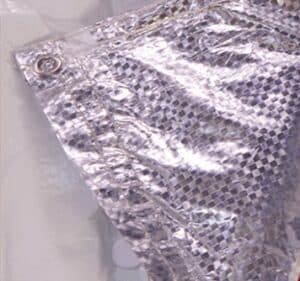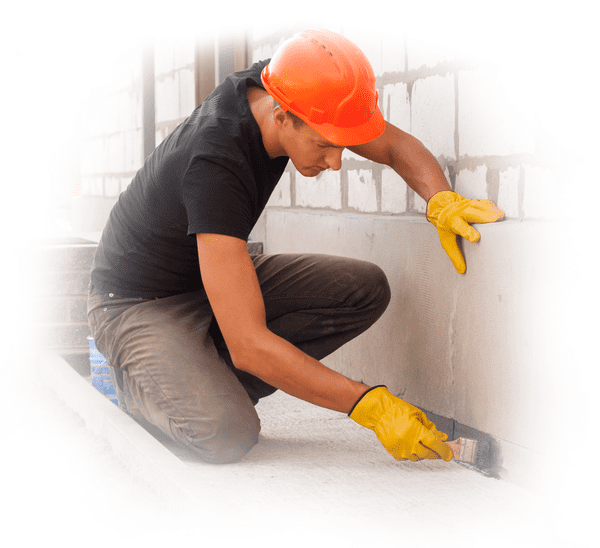There’s an adage that haughtily tells us “suffering builds character.” But experience will tell you that having cold floors (and colder feet) causes fights over the thermostat. Want to improve your family’s comfort? Reduce your utility costs and stress on your furnace? Radiant Armor insulation in your crawl space could be just what you need.
This insulation is a great product that Acculevel installs, along with spray foam insulation or encapsulation, to create the cleanest and coziest crawl space you can have. Since Andy Beery founded the company in 1996, we’ve helped more than 35,000 homeowners restore strength and health to their homes. Family-owned and operated, we proudly serve Indiana and portions of the surrounding states.
In this article, we’re going to explain what Radiant Armor insulation is, how it’s installed, and how it should be used.
What is Radiant Armor Insulation?
Radiant Armor is a brand name for the product Acculevel installs. This is a type of liner insulation, kind of like a metallic blanket. It is a light-weight and inorganic material, which is especially important in a crawl space.

This is a close-up photo of Radiant Armor Insulation.
Most crawl spaces don’t have a constructed floor. A crawl space is normally framed by your foundation walls, but open to the ground below. This soil exposure is one of the main reasons crawl spaces are damp (and dirty). Moisture and water can easily move through the soil and evaporate into the crawl space. This damp and dark space is a great location for biological growth: mold, mildew, bacteria, etc.
But an inorganic material will not support this growth; there’s nothing “edible” in the armor insulation that these organisms can break down and use.
This isn’t true for things like the wood in your flooring structure, however. In another article, we explain how a damp crawl space can create damage and cost you money.
What is the R Value of Radiant Armor Insulation?
There are some different opinions about using “R value” as a measurement of insulation quality, but it is the standard practice used by the North American Insulation Manufacturers Association (NAIMA).
Installed properly, Radiant Armor blanket insulation has an R value of 8.73. For the sake of comparison, the best R value you can expect from 3 inch fiberglass batting insulation is 3.8. We do not recommend fiberglass insulation because it absorbs moisture. This means once it gets damp, it stays damp- and it’s pressed against your wooden floor joists, making those damp. Damp wood not only decays, it’s also the preferred diet for termites.
Foam board insulation is another option that has an R value in the 3.5-4.2 range. Unfortunately, it has a tendency to fall down. The adhesive does not hold up well to moisture and major temperature changes. (Here in the Midwest, seasonal temperatures can reach anything from 90+ to below 0℉).
One alternative option that we do recommend is closed cell spray foam insulation. It has a maximum R value of 7.12. You can learn more about spray foam insulation in this blog , if you’re interested.
How Is Blanket Insulation Installed?
Radiant Armor is applied to the walls of the crawl space. It’s not hung up like curtains; the blanket is firmly attached to the wall so that it won’t fall down. The edges are sealed with seam tape to prevent gaps, but the blanket itself is attached to the wall with specific fasteners. The insulation is tear-resistant, so punctures for installation will not compromise it.

This is a photo of radiant armor, after it’s been installed in a crawl space. You can see the blue seam tape around the edges; the wall fasteners are white.
Radiant Armor can be combined with crawl space encapsulation, which is a method for sealing the crawl space for maximum protection. Encapsulated crawl spaces are waterproofed, sealed along the floor and walls, and have a dehumidifier installed to control any remaining moisture.
If you don’t want to go as far as encapsulation, you should at least have a vapor barrier installed across the “floor” of the crawl space. This reduces the vapors, gases, and moisture that escape from the soil into your home.
Do You Want to Know More About Crawl Space Repair?
We have written a comprehensive guide to crawl space repairs that is available to any homeowner, free of charge. It covers everything: sagging floors, waterproofing, air quality problems and solutions, exterior entrance types, and costs for each of the services presented.
If you haven’t hired a contractor before- or if your last experience wasn’t a good one- please also check out our checklist of questions to ask a contractor. This guide was developed as a company project; everyone from the office staff to the service techs was asked for their input. The result is a detailed list of questions to ask, why this question should be asked, and what answers you should be concerned about receiving.
Always check that the company you hire is properly insured and accredited by the Better Business Bureau. You can also find reviews of most contractors on third party websites like Google and Home Advisor.
Are You Ready to Schedule an In-Home Assessment?
Do you live in our service area? (You can find our interactive map here!) If so, give us a call and we’ll schedule an appointment for you with one of our highly trained and experienced project advisors. They will meet with you, review all of your concerns, discuss the symptoms or problems you’ve seen, and then thoroughly evaluate your home.
Would you prefer to schedule an appointment by text or email? Let us know your communication preferences when you complete our online form.
Once the assessment is complete (no one should estimate your costs before evaluating your home), your advisor will go over what they’ve seen and their best recommendations. Our goal is to provide you with a whole-home solution that addresses both the symptoms and the root cause of the problem.
If you don’t live in Acculevel’s service area, we have an article that provides additional resources for finding a good local contractor. (The advice about the BBB includes you, too!)




















